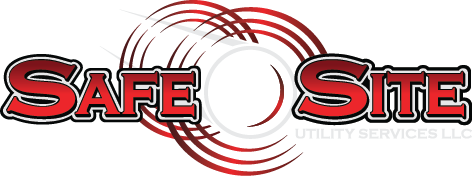Subsurface Utility Engineering
Subsurface Utility Engineering (SUE) is a process used to positively identify the location, depth, and characteristics of underground utilities as part of the design stage of constructing new infrastructure or placing new utilities.
Benefits of Using Subsurface Utility Engineering
- Eliminate project delays caused by unforeseen utilities in path
- Eliminate cost of re-designs caused by unforeseen utilities
- Reduce costs of utility locating and relocations
- Reduce or eliminate utility damages
- Reduce downtime caused by utility damages
- Increased job site safety
- Reduce unknowns thereby lowering project bids
- Lower overall project cost*
Why call Safe Site?
Safe Site Utility Services is a full service subsurface utility engineering and utility locating firm. We employ the use of a wide range of state-of-the-art locating technology and highly efficient vacuum excavation equipment coupled with years of experience and a meticulous attention to detail. These elements are what sets us apart from others in the SUE industry.
Safe Site has a reputation of quality. Our goal on every project is to identify ALL underground utilities and other potential conflicts during the design phase so that there are NO surprises during construction.
Safe Site Utility Services
has the expertise and equipment to provide
all four levels of SUE services.
The highest and most effective SUE level presently available. Non-destructive digging equipment is used to determine the precise horizontal and vertical position of underground utilities. When surveyed and mapped, precise plan and profile information is available for design decisions and justification.
(Air or Hydro Vacuum Excavation)
Determines the existence and horizontal position of underground utilities using surface geophysical techniques. This level also includes obtaining two-dimensional mapping information, which aids in decision-making for design, utility relocations, and installations. Locating is often overlooked during the design process. Safe Site believes this is one of the most important steps in the SUE process.
(Electromagnetic Locating, Radio Detection, 2D & 3D Ground Penetrating Radar, Acoustic Locating, CCTV)
Entails surveying visible above-ground utility features, such as manholes, valve boxes, utility marker posts, and more. This information is then correlated with existing utility records.
(Survey Grade or Mapping Grade)
Involves gathering record data, which may include digital records, on-site utility records, GIS / Municipal records.
As-builts, Design Drawings, Quarter Section Maps, Historical Satellite Imagery
LEVEL A – UTILITY TEST HOLE / POTHOLING
The highest and most effective SUE level presently available.
Non-destructive digging equipment is used to determine the precise horizontal and vertical position of underground utilities.
When surveyed and mapped, precise plan and profile information is available for design decisions and justification.
(Air or Hydro Vacuum Excavation)
LEVEL B –
UTILITY DESIGNATING AND MAPPING
Determines the existence and horizontal position of underground utilities using surface geophysical techniques. This level also includes obtaining two-dimensional mapping information, which aids in decision-making for design, utility relocations, and installations. Locating is often overlooked during the design process. Safe Site believes this is one of the most important steps in the SUE process.
(Electromagnetic Locating, Radio Detection, 2D & 3D Ground Penetrating Radar, Acoustic Locating, CCTV)
LEVEL C – SURVEY OF ABOVE GROUND FEATURES
Entails surveying visible above-ground utility features, such as manholes, valve boxes, utility marker posts, and more. This information is then correlated with existing utility records.
(Survey Grade or Mapping Grade)
LEVEL D – RECORDS / RESEARCH
Involves gathering record data, which may include digital records, on-site utility records, GIS / Municipal records.
As-builts, Design Drawings, Quarter Section Maps, Historical Satellite Imagery
Quality Level D – The most basic level of information as obtained from public records and utility owner provided maps and information.
Quality Level C – Involves taking the records obtained in Level D and correlating that information with visual signs of above ground and surface level infrastructure such as manholes, valves, utility poles, etc.
Quality Level B – Utilizing geophysical methods such as electromagnetic locating to “designate” the existence and path of utilities in the area.
Quality Level A – Utilizing Vacuum Excavating to safely expose all utilities and determine their exact location, depth, characteristics and condition.
*A joint study by Purdue University and the Federal Highway Administration in 1999 concluded the following:
A total of $4.62 in savings for every $1.00 spent on SUE was quantified. Qualitative savings were non-measurable, but it is clear that those savings are also significant and may be many times more valuable than the quantifiable savings. Only three projects returned less in savings than expenditures. This leads to the conclusion that SUE is a viable technologic practice that reduces project costs related to the risks associated with existing subsurface utilities and should be used in a systemic manner. https://www.fhwa.dot.gov/programadmin/pus.cfm
